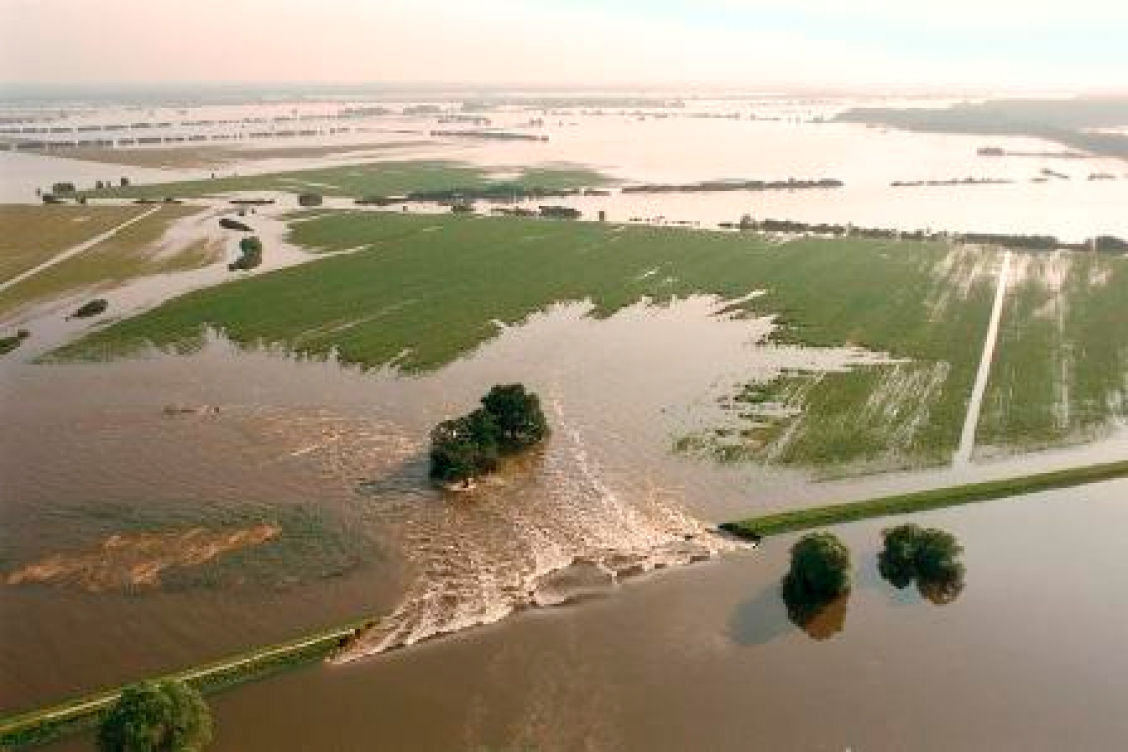

CP Changes in the Hydrological Cycle Changes in the Hydrological Cycle
The global hydrological cycle includes many different components reacting in complex, dynamic and often non-linear ways to external forcings such as, but not limited to, climate change.
Changes in the Hydrological Cycle
This Collaborative Programme aims at improving the scientific understanding of hydrological processes under modified climatic boundary conditions and at studying possible impacts of changing hydrological cycle components (precipitation, runoff, snow, etc) on the environment and the society. Meeting emerging societal challenges, in fact, is another aspect this CP intends to address. Current key topics of the CHC—CP include:
Global precipitation changes and runoff. Precipitation changes at the global level display a complex pattern, without a clear-cut average trend in the last century but with an apparent tendency to the intensification of the hydrological cycle in many areas of the world. Using observations and (global to hydrological) model simulations, this research task studies current and expected changes of precipitation at the global and European scale, with a specific focus on extreme episodes and their effects on mean runoff and intense flooding and drought events.
Interaction between climate and hydrological/land surface processes. Modifications of the water cycle significantly affect land surface properties and ecosystem functioning and are at the same time driven by changes in vegetation and land surface changes. In order to better understand these complex interactions, this CP uses a hierarchy of models working at different spatial and temporal resolutions, compared to/validated against in-situ and EO data.
Climate hot spot regions: Mediterranean region and Global Mountains. The Mediterranean basin and mountains areas are among the regions which are referred to as “climate change hot-spots”. In these regions climate change signals are amplified, as are their possible effects. Studying these areas would allow to develop appropriate adaptation and mitigation measures in the coming decades.
Societal challenges related to impact of changes in the hydrological cycle. Among the expected impacts of observed and projected changes in the hydrological cycle are the lack of water for drinking, agriculture, industry and energy production, which imposes risks for civil security. Impact-oriented research aims at effectively responding to crucial societal challenges resulting from changes in different components the hydrological cycle and to support adaptation and risk mitigation strategies.
Precipitation changes at the global level display a complex pattern, without a clear-cut average trend in the last century but with an apparent tendency to the intensification of the hydrological cycle in many areas of the world. Global climate models indicate possible global precipitation changes before the end of the century, with an intensity and pattern that depend on the specific climate scenario and are not always consistent between the different models.
Precipitation is a particularly difficult variable, as it is characterized by strong intermittency at all scales and strong orographic dependence, which makes it often hard to model and to measure (see Fig. 1). The measurement of precipitation itself, either by ground stations, radars or satellites, is still a challenging task, which becomes especially hard for solid precipitation at high latitudes or altitudes. These difficulties could hamper efforts to understand and model the hydrological cycle and its variability.
We work based on a list of science topics. The science topics can be adjusted and allow flexible participation of ECRA and non-ECRA partners. The general strategy starts from fundamental physical concepts, continues via process understanding and goes towards the best possible numerical simulations of the global and regional changes of extreme events, including composition-climate interactions, feedback and impacts.
CP Changes in the Hydrological Cycle Key Topics
The global hydrological cycle includes many different components reacting in complex, dynamic and often non-linear ways to external forcings such as, but not limited to, climate change.


This research task intends to address the following open questions:
Upscaling of small-scale ecosystem and land surface changes and how to incorporate them into climate models and downscaling of climate information to properly drive land surface and ecosystem responses.
Assessing the impact of small-scale heterogeneities on climate variability. Here, one can ask up to which scale variations in the small-scale surface processes (e.g. evapotranspiration) affect climate dynamics, or what effect land surface heterogeneities can have on the statistics of extreme events.
Whether changes in vegetation properties (such as vegetation patterning) and ecosystem transitions can trigger regional or global changes in climate dynamics.
The methods used to address these issues include conceptual approaches, intermediate complexity models, fully coupled, scale-crossing climate and land surface models, global and regional climate models, statistical and stochastic downscaling methods, besides the analysis of available data and the development and use of metrics to compare models and observations.
This Collaborative Programme places a focus on specific climate hot-spots, the Mediterranean region and mountain areas that are and are expected to be particularly vulnerable to climate variability and changes and addresses the ecological and socioeconomic challenges that are related thereto.
the Mediterranean region
The Mediterranean basin is considered a “hot spot” of climate change. It displays an ongoing tendency towards drier conditions and this trend is expected to continue and possibly worsen in the coming decades. At the same time, individual events of extreme rainfall continue to cause human losses and severe economic damage. Read more
mountain areas
Often called the “water towers” of our planet, owing to their role in providing water to the surrounding lowland areas, mountain regions are heavily impacted by climate change. Among the changes in the hydrological cycle components are glacier retreat, decrease of snowpack duration and thickness, changes in precipitation regimes, changes in aquifers, slope stability.
A lack of water for drinking, agriculture, industry and energy production are expected to impose risks for civil security. Therefore, it is important to assess and predict possible changes in water availability, distribution, and quality. Research needs to be impact-oriented in order to respond to crucial societal challenges resulting from changes in different components the hydrological cycle and to support adaptation and risk mitigation strategies. The appropriate context for adopting this approach is one of collaboration between scientists including hydrologists, social scientists and economists.
Downloads Documents & News
Hydrological Cycles Workshops
The Collaborative Programme Changes in the Hydrological Cycle has organised two workshops and one Parliamentarian Lunch Briefing so far.
read moreHydrological Cycles Lunch Briefing
The Changing Mountains of Europe: Water Resources and Ecosystems at Risk
read more2nd Workshop Changes in the Hydrological Cycle
Cross-sale Interactions in the Continental Water Cycle
read moreCoordination This Collaborative Programme is coordinated by:


Lisa Palazzi
National Research Council of Italy